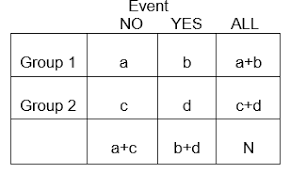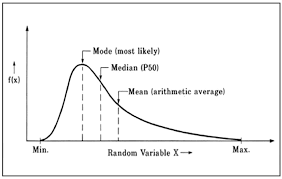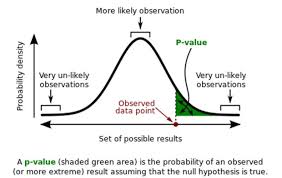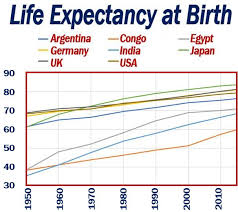
Statistics Analysis Research Paper
Statistics Analysis Research Paper
Order Instructions:
Please let me know how many pages will be.
I will email the task and other related documents later.
Thank you very much.
SAMPLE ANSWER
Question 1
Conduct a one-way ANOVA to investigate the relationship between hair color and social extroversion. Be sure to conduct appropriate post hoc tests. On the output, identify the following:
- F ratio for the group effect
- Sums of squares for the hair color effect
- Mean for redheads
- P value for the hair color effect
Table 1: Definition of variables
| Variable | Definition |
| Hair Color
|
1 = Blond
2 = Brunet 3 = Red Head |
| Social Extroversion | A measure of social extroversion |
According to Kumar (2008), the following steps were followed to carry out the test. On the data editor menu bar, Click analyze then a drop down menu pops and general linear model is chosen then univariate. In the Univariate dialog box, choose extroversion then move it to the dependant variable box and Click on hair color and move it to the fixed factor(s) box. Click options and from the dialog box which appears, click hair color on the factor(s) and factor interactions box and move it to the display means for box. In the display box, click homogeneity tests, estimates of effect size, and descriptive statistics. In the factor(s) box, choose hair color and move it to the post hoc tests for box. Click turkey and R-E-G-W-G in the equal variances assumed box. Also click dunnet’s c in the equal variances not assumed box.
| Descriptive Statistics | |||
| Dependent Variable: Social Extroversion | |||
| Hair Color | Mean | Std. Deviation | N |
| Blond | 5.17 | 2.787 | 6 |
| Brunet | 3.67 | 1.211 | 6 |
| Redhead | 2.33 | 1.033 | 6 |
| Total | 3.72 | 2.109 | 18 |
Table 2
| Levene’s Test of Equality of Error Variancesa | |||
| Dependent Variable:Social Extroversion | |||
| F | df1 | df2 | Sig. |
| 1.520 | 2 | 15 | .250 |
| Tests the null hypothesis that the error variance of the dependent variable is equal across groups.
Table 3
|
|||
|
Tests of Between-Subjects Effects |
||||||
| Dependent Variable:Social Extroversion | ||||||
| Source | Type III Sum of Squares | df | Mean Square | F | Sig. | Partial Eta Squared |
| Corrected Model | 24.111a | 2 | 12.056 | 3.511 | .056 | .319 |
| Intercept | 249.389 | 1 | 249.389 | 72.638 | .000 | .829 |
| hair | 24.111 | 2 | 12.056 | 3.511 | .056 | .319 |
| Error | 51.500 | 15 | 3.433 | |||
| Total | 325.000 | 18 | ||||
| Corrected Total | 75.611 | 17 | ||||
| a. R Squared = .319 (Adjusted R Squared = .228) | ||||||
Table 4
A one-way analysis of variance was performed to evaluate the relationship between hair color and social extroversion. Hair food was the independent factor and it included three levels i.e. blond, brunet and red head. Measure of social extroversion was the dependant variable .The ANOVA test conducted was significant at the 0.05 level, F (2, 15) = 3.511, p = 0.056, ms error = 3.433 (Ghauri, et al. 2005).
From the above output;
a). F ratio, F (2, 15) = 3.511
b). p value, p = 0.056
c). Sum of squares for hair color, SS = 24.111
d). Mean for red heads, m = 2.33
Question 2
Effect size for the relationship between hair color and extroversion
According to Gay, et al, (2009) the strength of the relationship between hair color and the measure of social extroversion as assessed by n2 , was strong with hair color accounting for 32% of the variance of the dependent variable.
Pair wise differences were evaluated through conducting follow-up tests. Variances among the 3 groups range from 1.067 to 7.8 hence we assume that equal variances were not assumed and we therefore evaluate results for the Dunnett’s C test as a post hoc comparison test. From table 4 below, there was a significant difference in the means between the brunet and the blond group and also between redhead and blond group but no significant difference between brunet and red head at a 95%confidence interval.
95% confidence intervals of pair wise differences in mean measure of social extroversion
| Hair Color | M | SD | Blond Brunet |
| Blond
Brunet Red Head |
5.17
3.67 2.33 |
2.787
1.211 1.033 |
(-2.54, 5.54) (-1.11, 6.78) (-0.78, 3.45) |
Table 5
Question 3
A box plot to display the differences among the distribution for the 3 hair color groups.
To create the box plot, click graphs from the data editor menu bar. Then choose legacy dialogs and click on box plots from the drop down menu which appears. Choose simple then define the variables and click ok (Kumar, 2008).
Figure 1 (Source: SPSS output)
References
Ghauri, P., Granhaug, K. and Kristianslund, I.,(2005). Research Methods in Business Studies: a Practical Guide.
Kumar, R. (2008). Research Methodology: A step-by-step Guide for Beginners. Greater Kalash: Sage Publications
Gay, L,R., Mills, E. G., Airasian, P.,(2009). Educational Research: Competencies for Analysis and Applications (10th ed.)
Appendix
| Multiple Comparisons | ||||||
| Dependent Variable: Social Extroversion | ||||||
| (I) Hair Color | (J) Hair Color | Mean Difference (I-J) | Std. Error | 95% Confidence Interval | ||
| Lower Bound | Upper Bound | |||||
| Dunnett C | Blond | Brunet | 1.50 | 1.241 | -2.54 | 5.54 |
| Redhead | 2.83 | 1.213 | -1.11 | 6.78 | ||
| Brunet | Blond | -1.50 | 1.241 | -5.54 | 2.54 | |
| Redhead | 1.33 | .650 | -.78 | 3.45 | ||
| Redhead | Blond | -2.83 | 1.213 | -6.78 | 1.11 | |
| Brunet | -1.33 | .650 | -3.45 | .78 | ||
| Based on observed means.
The error term is Mean Square(Error) = 3.433. |
||||||
Table 6
| Social Extroversion | ||||
| Hair Color | N | Subset | ||
| 1 | 2 | |||
| Tukey Ba | Redhead | 6 | 2.33 | |
| Brunet | 6 | 3.67 | 3.67 | |
| Blond | 6 | 5.17 | ||
| Ryan-Einot-Gabriel-Welsch Rangeb | Redhead | 6 | 2.33 | |
| Brunet | 6 | 3.67 | 3.67 | |
| Blond | 6 | 5.17 | ||
| Sig. | .232 | .181 | ||
| Means for groups in homogeneous subsets are displayed.
Based on observed means. The error term is Mean Square(Error) = 3.433. |
||||
| a. Uses Harmonic Mean Sample Size = 6.000. | ||||
| b. Alpha = .05. | ||||
Table 7
We can write this or a similar paper for you! Simply fill the order form!












